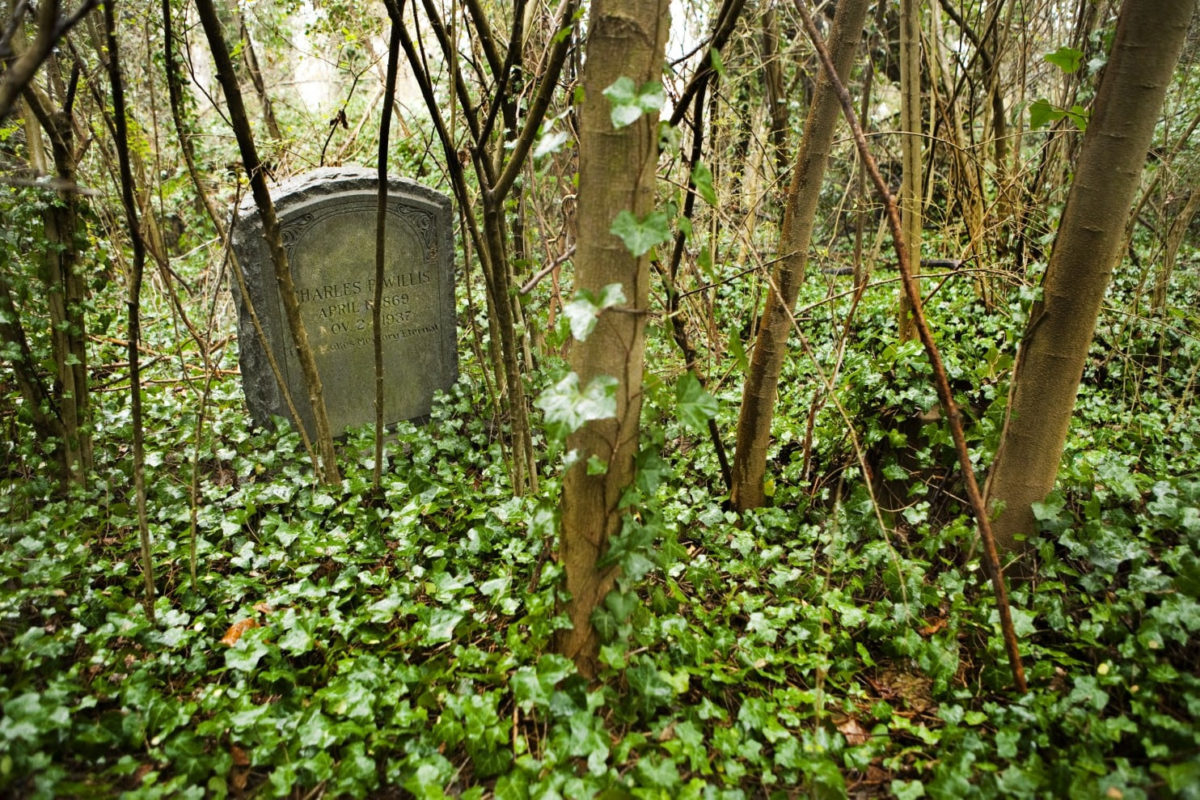
Black cemeteries are crucially important — and all too often neglected
This article first appeared in The Washington Post, May 19, 2017
By Clarence B. Jones
Clarence B. Jones, a former adviser to Martin Luther King Jr., is scholar in residence at the Martin Luther King Jr. Research & Education Institute at Stanford University and co-author of “Behind the Dream — The Making of the Speech That Transformed a Nation” and “What Would Martin Say?”
Imagine a cemetery where gravestones disappear under vines, weeds and debris; where crypts are cracked open and exposed to robbers and the elements. It sounds like a scene from a horror movie, but it’s what visitors find at Evergreen Cemetery in Richmond and at many other historic African American cemeteries across the United States. Families often are unable to find — let alone visit — the abandoned and largely forgotten graves of their loved ones.
Recently, Virginia took steps to reverse the years of neglect of historic African American cemeteries, including Evergreen Cemetery, just 2.5 miles from the State Capitol. On March 3, Virginia Gov. Terry McAuliffe (D) signed a bill allocating $34,000 to restore and preserve Evergreen Cemetery and nearby East End Cemetery. This legislation, long overdue, should give impetus to other state governments, philanthropists, community organizations and any group that wants to protect and preserve these important windows into African American history and culture.
For decades, Virginia has funded preservation for historic Confederate cemeteries. The new legislation is an important first step in providing the same kind of care and recognition to the graves of African Americans lost in the Civil War and to the memory of their service and the heritage of their communities. Civil War cemeteries, whether Confederate or African American, are not only important spiritual monuments for families but also gateways into the people, places and events that shaped our nation.
Opinions newsletter
Thought-provoking opinions and commentary, in your inbox daily.
The neglect of historic African American cemeteries is as widespread as it is unknown. Throughout the 19th century and much of the 20th, African Americans were segregated even in death, often buried in off-the-beaten-path black cemeteries that, over the years, received little funding and fell into disrepair.
This unfortunate legacy had no geographic boundaries. In the prominent Georgetown neighborhood in the District, Oak Hill Cemetery — the lush resting place of former members of Congress and media moguls — is bordered by Mount Zion and Female Union Band Society Cemetery, where cracked headstones have fallen into piles and an unknown number of unmarked graves have been lost altogether. Similar heartbreaking scenes are on full display in Georgia, North Carolina, Florida, Michigan and many other states.
The neglect and disrepair of these cemeteries point to the broader challenge of preserving African American history in the United States. We must do better.
While state and local governments have been slow to react, volunteer, nonprofit and private organizations have moved to fill the void. In one such model for action, three years ago in North Carolina, a group of volunteers, aided by a businessman, formed a nonprofit organization called the Cemetery Restoration Committee to begin repairing the dilapidated John N. Smith Cemetery in Southport, N.C. Last year, this African American cemetery of deep historical and spiritual significance for the community, with more than 800 interments, received a $14,500 grant from the Orton Foundation to help with restoration.
The list of individuals, charities and other nonprofits stepping up to address this issue is long — but not nearly long enough. These neglected cemeteries are often hidden from public view. People need to recognize that this is a problem that exists in too many places, perhaps even in their own communities, and mobilize others to learn about the problem and act to fix it. It requires research, volunteers, funding. It requires a partnership between government, philanthropists, businesses, communities and nonprofits. Most of all, it requires a commitment to reclaim these fading pieces of our nation’s heritage before they are lost forever.
We marked the 152nd anniversary of the end of the Civil War on May 9. Americans should reaffirm our commitment to preserving our history and protecting it for generations to come. It is worth noting that black soldiers in the Civil War suffered a 35 percent higher mortality rate than other troops, even though they did not begin fighting until 18 months after the war began. This is just one of the many stories that can be told through the revitalization of our historic African American cemeteries. It is part of an important process to continue working for equality, even for those who came before us.
Read more about this issue:
David Alpert: Environmental justice for Ivy City
The Post’s View: Paving over black history in Montgomery County
Blair L.M. Kelley: You can’t tell U.S. history without black history
Arthur J. Magida: From the Underground Railroad to the African American Museum
